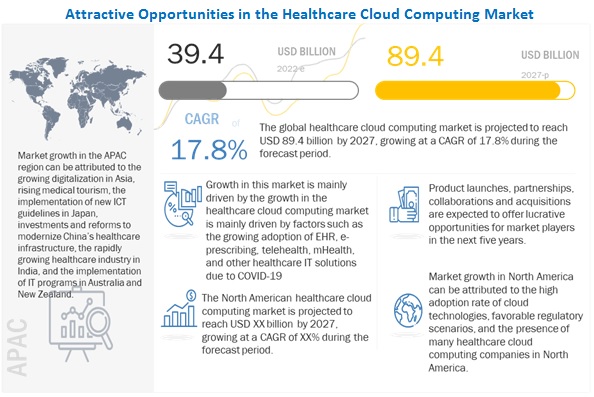Introduction:
Ever since the concept of cloud native applications came into the picture, it has become one of the most popular topics in the IT industry. Software developers have mixed opinions on this concept. Some people think it’s just a temporary trend and will fade away with time, whereas others believe that cloud native applications are the future of application development.
Irrespective of what may come tomorrow, cloud native application development has transformed the IT industry in today’s time, and its usage is only increasing day by day. The reason for the popularity of cloud-native applications is its numerous benefits. Prospects of the concept have captured the attention of business owners across the world.
Market Trends:
According to a latest industry report, the cloud native applications market is anticipated to reach a value of 166.8 billion U.S. dollars by 2024, with an expected growth rate of 6.1 % every year. Alibaba Cloud says that with the development of technologies like 5G and IoT in the coming years, most enterprises will adapt to cloud-native for application development and eventually become ubiquitous.
At the moment, many platforms offer cloud native application development. In this article, we will discuss why startups should consider developing apps using Java Spring Framework. However, before we proceed with that, let’s understand what we mean by cloud native applications and how they work.
Key Features Of Cloud Native Applications:
Cloud-native application development is a method of building and running applications for cloud-computing architecture. The cloud-native technology enables enterprises to create and run scalable applications in public, private, and hybrid clouds.
The cloud native applications were designed to take full advantage of cloud computing and are hosted in the cloud. Features of this technology include microservices, containers, APIs, and dynamic orchestrations. Let us understand these features one by one.
Microservices:
Cloud native applications are composed of microservices. Microservices refer to the collections of small services that are operated independently of each other. Each service consists of its unique data and caters to a specific need of the application. In addition, these independent services interact with each other through APIs.
APIs:
All microservices can communicate with each other through APIs and bind all the loosely coupled services. These APIs can also be built, deployed, and managed in a cloud or multi-cloud environment.
Containers:
Containers help to develop all the cloud native applications. Container is an isolated package of software that consist of the code and all of its dependencies. They allow programs to run in different computing environments and prevent microservices from interfering with one another.
Orchestrations:
Container orchestration tools assist in managing the container lifecycle, which can be pretty complex if done manually. Above all, these tools monitor the container, schedule starting up and shutting down of a container, balance load. It also sets relevant parameter and deploys them on the server cluster nodes.
These features of cloud-native applications have enabled enterprises and developers to embrace the latest technologies for developing applications more efficiently.
Some of the benefits of utilizing cloud native applications are:
Cost Effectiveness:
Cloud computing eliminates the need for external hardware and infrastructure required for load balancing. virtual servers help test Cloud-native applications. This allows to improve the applications’ performance. With the help of containers, the number of microservices increases. This saves a lot of resources and money for enterprises.
Scalable Solution:
As microservices are isolated, it is easily scalable, and other services won’t be affected. Above all, enterprises can utilize resources as per their requirements.
Portability:
Containers allow cloud-native applications to run in different physical computing environments.
Reliability:
Containers also prevent microservices from damaging each other. For instance, if one microservice fails, it doesn’t affect the services adjacent to it.
Zero Downtime:
With container orchestration tools such as Kubernetes, it is possible to deploy software updates without any downtime.
Automation:
By adopting cloud-native technology, enterprises can use DevOps automation features to deploy and deliver software updates continuously.
Benefits Of Using The Java-Spring Framework For Developing Cloud Native Applications:
Spring is an open-source framework that was developed by Rod Johnson in 2002 for developing Java-based enterprise applications. The framework offers comprehensive programming and configuration.
Modularity is one of the most impressive features of the Java-Spring framework; it makes the platform easy to use for developers. The framework is lightweight, therefore allowing applications to perform well without any glitches. In addition, Spring also provides containers for the management of the bean lifecycle.
The Java-Spring framework provides solutions to most of the infrastructure facilities within the enterprises. Hence, most of the heavy lifting is done by the platform itself. This helps businesses save money by not maintaining their on-premise infrastructure.
The process cuts down development costs across the board, hence making the Spring framework an ideal choice for cloud-native application development. Startups are always looking for a way to reduce production costs; therefore, the Java-Spring framework is the best way to develop applications.
Additional Benefits Of the Framework:
● The platform solves all the difficulties faced by any kind of business while developing complex applications. After that, to integrate different components of complex applications, it provides Spring Core, Spring IoC, and Spring AOP.
● It simplifies the development process by providing layers of technologies like servlets, JDBC, JNDI, RMI, JMS, Java Mail, etc.
● Developers can develop applications using the POJOs (Plain Old Java Object). It eliminates the process of importing heavy Enterprise containers during development. Therefore, this makes the process of testing easier and provides an option of utilizing a robust servlet container.
● The framework is already integrated with different technologies like the ORM framework, J2EE, JDK Timers, and other frameworks of Java. Hence, it does not have any restrictions on what frameworks to use. Therefore, startups don’t have to waste time and money on training their developers about these frameworks.
● Spring allows the use of XML configuration as well as Java-based annotations, which offers the fluidity to choose with any one of them.
● The lightweight containers of the Spring framework can be activated without any web server or applications server.
● It also offers the development of remote-enabled services via its arrays of APIs. Spring supports Remoting methods like Remote Method Invocation (RMI), Hessian, Burlap, HTTP invoker, JAX-WS, and JAX-RPC, allowing developers to focus on what is more important.
● The transaction management interface provided by the Spring framework is flexible and works in all the environments offered by JAVA. It enables developers to use local transactions in small applications and scale up to JTA for global transactions. This helps make it a relevant solution even when the business has grown.
Final Thoughts:
The benefits of the Java-Spring Framework cater to all the needs of startups for developing a world-class application. Startups can reduce their workload by outsourcing their IT job to a service provider with a team of talented professionals.
Like other businesses, if you too are looking to develop cloud Native Applications, Mindfire Solutions can be your partner of choice. We have deep expertise in Spring framework. Moreover, we have a team of highly skilled and certified software professionals, who have developed many custom solutions for our global clients over the years.
Here is an interesting project we have done to develop a cloud platform for a retail solutions provider with JavaScript. Click here to know more: Case study on cloud based retail solution.



